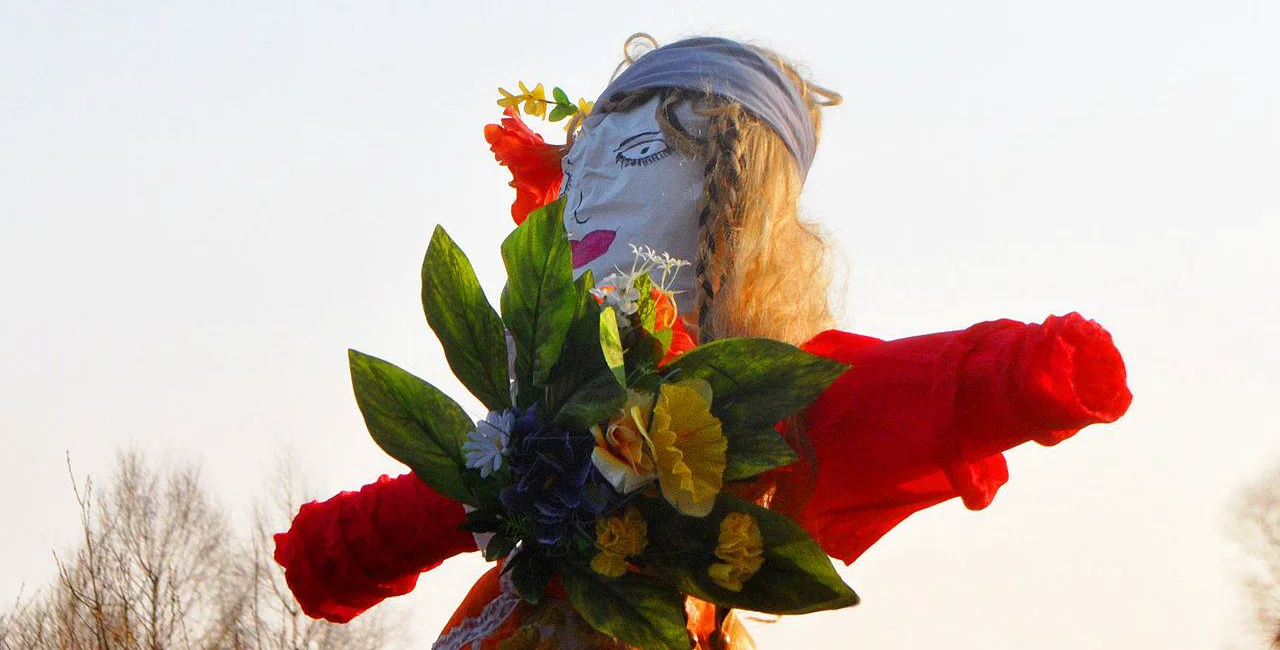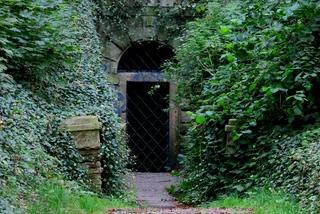Update: This story was originally published in 2021. Deadly Sunday (Smrtná neděle) this year falls on March 26.
When you ask people about getting rid of the spirit of winter, most will mention bonfires on Witches Night on April 30. That is actually the third time that winter is chased away with ancient rituals, as winter doesn’t seem to take a hint.
The first time is Hromnice, which is related to Groundhog Day, on Feb. 2. The second is even more obscure, and seems to be less celebrated very year: Two weeks before Easter the Slavic goddess of death, Morana, is either drowned or burned to make the fallowness of winter finally leave the fields so Vesna, the goddess of spring, can return.
As with much folklore with pagan roots, traditions vary greatly from place to place. Slavs don’t even agree on the name. While Morana is the name in Czech as well as in Croatian, Serbian and Slovene, she is Marzanna in Polish, Morena in Slovak, Marena in Russian, and Mara in Ukrainian. In Czech, she is sometimes simply called Smrtka, a version of the word for death.

And while many sources have Morana being chased on the second Sunday before Easter, known in Czech as Deadly Sunday (Smrtná neděle), others place it on the spring equinox, usually March 20 or 21. This year by chance, Deadly Sunday falls on March 21 as well.
The equinox was probably the original date, as other pagan traditions such as Hromnice and Dušičky are linked to the change of seasons and position of the sun. But pagan rituals often became tied up with Christian ones, so tacking Morana onto the pre-Easter season of Lent likely happened once Christianity took over.
Morana starts her deadly reign with the winter solstice, roughly Dec. 21. During her time, nothing will grow in the frozen fields. Morana is the daughter of Lada, goddess of health and fertility, and Svarog, god of celestial fire.

To get rid of her dark influence, on Deadly Sunday an effigy of Morana is drowned in the local river or stream. In places without a suitable stream, the effigy can be burned. Village girls, singing folk songs and carrying evergreen twigs, would parade with the effigy to its disposal site. Ideally, she is thrown from a high rock or a bridge. Looking at Morana after she is in the water can lead to an epidemic, a bad harvest. or severe misfortune for the looker. It is also a bad omen if one of the village girls trips during or after the ceremony.
A rather elaborate example of one of a Morana effigy can be seen in the Ethnographic Museum in Prague’s Kinsky Garden. This one is made of straw, and wrapped in rough white cloth, with a necklace of eggshells. According to local traditions, she can vary from a young bride to an old hag. Her attire ranges from a wedding dress to a traditional embroidered dress, called a kroj.
Czech writer Alois Jirásek in his 1894 book Old Czech Legends gives some details.
“During the time of snow and ice, long twilight and night, Morana ruled until the sun-god began to look more gently and warmly on the face of the earth. As the ice chains in the water receded, all the villages rejoiced. While singing, they took to the waters, the streams now free, and threw in the image of winter and death, and with joyous voices greeted Vesna, the sweet goddess of spring.”

In Prague, you can find linguistic traces of Morana in the street Na Moráni, which connects the square Karlovo náměstí to Palackého náměstí, right by the Vltava river. One of the tram stops at Karlovo náměstí is called Moráň. In pre-Christian times a grove of trees was dedicated to Morana in that area. It was cut down to make way for the Emauzy Monastery, established by Emperor Charles IV in 1347.
Witches Night, also known as Čarodějnice, has been gaining in popularity in recent years as a family event, though it was canceled canceled by drought on 2018 and the pandemic in 2020. Interest in drowning Morana has been ever diminishing. Some young school children celebrate it, mostly as an excuse for an arts and crafts project to make an effigy. In the Czech Republic, the tradition is strongest in the Moravia–Silesia region. It also has some following in in neighboring Slovakia and Poland.












 Reading time: 3 minutes
Reading time: 3 minutes 























